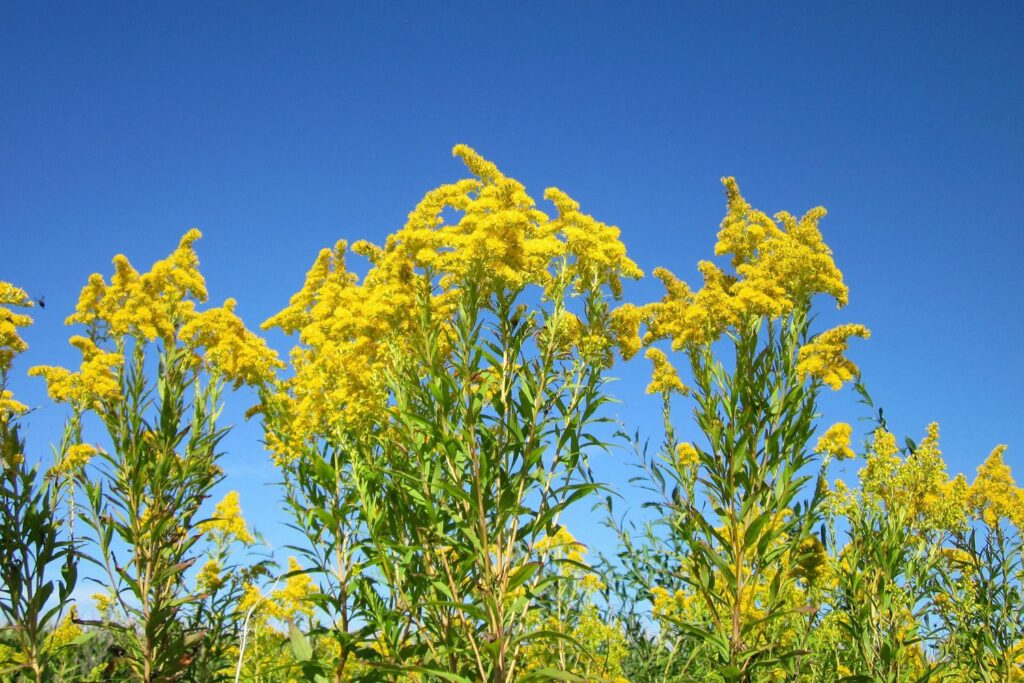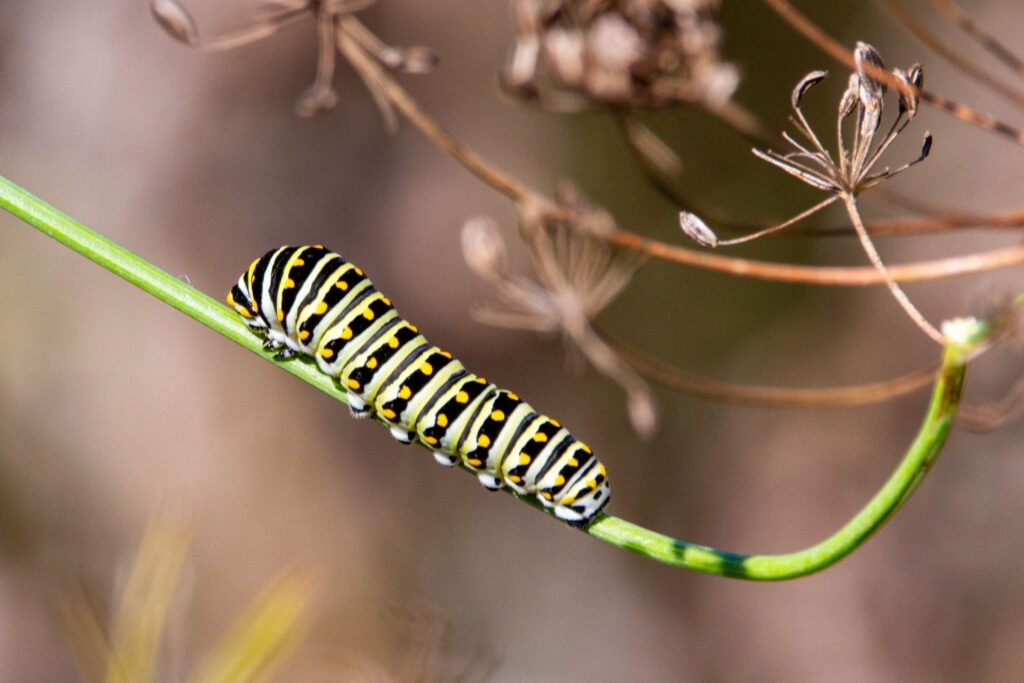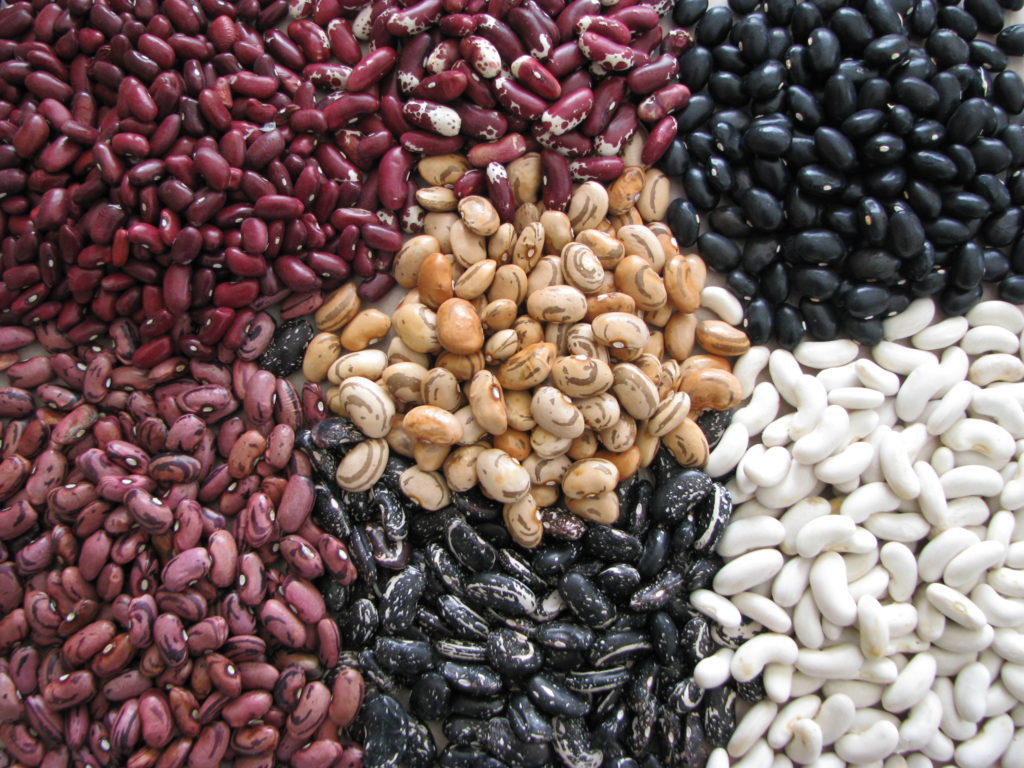
Goldenrod – it’s nothing to sneeze at!
As summer days are getting shorter, the cooler days of fall are fast approaching, but so is another allergy season. If you’re blaming Goldenrod for your sneezing fits – you have the wrong botanical suspect! The cause of your sinus woes is Ragweed, which blooms the same time as Goldenrod. The pollen of Goldenrod is heavier than Ragweed so therefore not easily dispensed by the wind.

Photography Credit: Fellow Master Gardener; Stacey Morgan Smith of Shenandoah Valley Flowers
Solidago or as we know it, Goldenrod, is a lovely fall-blooming perennial and can be found in meadows, pastures, along roads, and in ditches. There are more than 100 varieties of goldenrod native to North America with 30 species in Ontario. There is even a small patch, by choice not by accident in my vegetable and herb garden.
Goldenrod is a member of the Composite or Daisy family which is classified based on the plant shape. One variety that is very common in this area is Solidago Canadensis. It is very tall, reaching heights of 1.5 to 2 meters. It has a plume-like flower head. Another common variety is the rough stemmed Solidago rugosa Miller with its elm-branched flowers. There is club-like or wand-like goldenrod and then there are a few varieties of flat-topped Solidago.
Goldenrod in the Garden
I really love this tall beauty in my garden, adding a golden yellow colour to my garden. It is very popular in English and European cottage gardens and used in flower arrangements. Matter of fact, many florists here carry it as a cut flower in their shops.
Goldenrod is a valuable plant in our garden, playing host to some beneficial insects such as the lacewing, the parasitic wasp and the praying mantis. It is also an end of the season nectar source for butterflies and honeybees.
Health Benefits
Certain varieties of Goldenrod are also advantageous to our health. Practitioners of herbal medicine use it in a traditional kidney tonic to counter inflammation and irritation caused by bacterial infections or kidney stones. A tincture or tea made from leaves and flowers of a certain variety can be used for sore throats, snake bites, fever, kidney, bladder problems, colds, measles, and even asthma. A poultice of Goldenrod can be used for boils, burns, wounds, and sores. Our native Indians used to chew the leaves to relieve sore throats and chew the roots to relieve toothaches. The tea of the flowers can be made into a jelly that has a slight anise flavour.
So next time you are going for a country walk and you feel a sneeze coming on, don’t be quick to blame Goldenrod. Take a moment to appreciate this fall beauty and all the benefits it has on our environment.
Source: Ontario Wild Flowers
Related links





About The Author: Nancy Abra
The family kitchen garden has always been a big part of my life from the early days growing up on a farm to current days gardening near Thorndale, Ontario.
I have honed my gardening knowledge with various courses including a certificate in Horticulture from the University of Guelph, ongoing training with the London Middlesex Master Gardeners, active membership with the local Horticultural Society and as a volunteer gardener at Fanshawe Pioneer Village, It has always been important to me to feed my family from the best of my garden or from locally grown produce. For almost 50 years of preserving, canning, pickling, and using heirloom recipes including some of my own creations, I have developed tasty preserves for my family and friends which I market locally with the brand name "From My Garden".
More posts by Nancy Abra